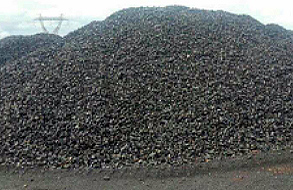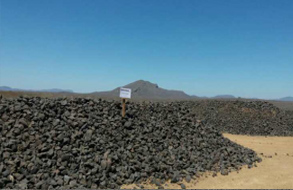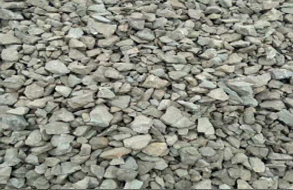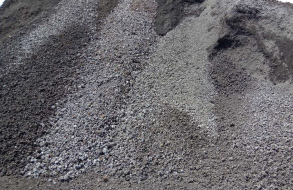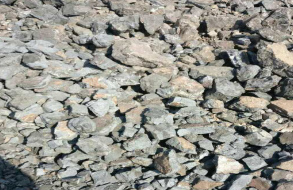Upward manganese price trend not to last for a long time
----Interview with Zhong Jun
Sales Director
Zhanjiang Zhongding International Trading Co., Ltd.
- Located in Zhanjiang City, Guangdong Province, Zhanjiang Zhongding International Trading Co., Ltd. is a large-scale comprehensive enterprise integrating mineral product processing and international trade based on its cut-edged advantage by adjacent to Zhanjiang Port, and its comprehensive strength is among the top of the same industry in the country. The company focuses on independent imports, exports, distribution and delivery of bulk goods like iron ore, manganese ore, alloy, etc, directly importing a large amount of manganese ore and iron ore from abroad every year by making full use of location adjacent to Zhanjiang Port.
- Asian Metal: Hello, Mr. Zhong. Thank you very much for accepting this interview from Asian Metal. First of all, please briefly introduce your company's manganese ore business.
- Mr. Zhong: Hello. Our company is currently mainly engaged in Gabonese and South African ores and other minor minerals. The Gabonese manganese ore is mainly graded at 44.5% and 46.5% while the South African manganese ore is mainly graded at 36-37% with some of medium-Fe ore at 43-44% Mn, 10-12% Fe. Sometimes, we also deal with some minor minerals like South African powder ores with grades at 36.5% Mn, 4.8% Fe, 0.019 % P and 0.03% S as well as South African high-silicon manganese ore with grades at 31.5% Mn and 22% Si, etc.
- Asian Metal: The current price of manganese ore is rising. What do you think is the main reason?
- Mr. Zhong: The global demand for manganese ore is well and thus the price increase is reasonable. However, the surging prices still lack supports. From April 2017, rebar prices continued to increase in China, largely helping silicomanganese demand to be released. As a result, the output of silicomanganese increased significantly, supporting the manganese demand to get recovered. From January to December 2017, China imported about 21 million tons of manganese ore, up by about 4 million tons from 2016. Therefore, the price surely increased. However, from late 2017 till now, 50% of the production was restricted for blast furnaces in Hebei and Shandong due to the heating season, sharply curbing the demand for silicomanganese. Nevertheless, the supports were fragile for high-level price and the increase would not last for long solely propped by mines.
- Asian Metal: How about the current stock of manganese ore at Qinzhou Port?
- Mr. Zhong: Stocks of manganese ore at Qinzhou Port reach about 40,000t currently, lower than the regular level of 70,000-80,000t. However, from mid-March till now, downstream alloy prices have continued to decline, resulting in relatively sluggish deals of manganese ore at present. Meanwhile, offers climbed up continuously from overseas mines, which have risen to USD8.9/mtu for Australian ore delivered in April and offers for Gabonese ore rose to USD8.8/mtu by following the trend. Downstream consumers are cautious to make purchases of high-priced manganese ore and stocks at Qinzhou Port are expected to be in low possibility for rebuilding in short term.
- Asian Metal: Miners like UMK, BHP, COMILOG, etc. have consecutively raised offers of manganese ore to China recently. How about your purchase of manganese ore for March to May?
- Mr. Zhong: We only rebuilt a small amount of stocks, mainly based on consideration of sharp changes in domestic manganese ore prices and rapid circulations. If we build stocks in bulk, risks will be higher. Thus, we only rebuilt limited stocks instead of large quantities.
- Asian Metal: The purchase prices of silicomanganese are lower-than-expected for March and what is the attitude towards manganese ore deals?
- Mr. Zhong: We can still make some profits in manganese ore delivered-to-port for March and we maintain normal sales currently. The cost is lower for manganese ore delivered-to-port for March. For example, the cost is only USD7.15/mtu for Australian manganese ore 46-47%, or RMB55/dmtu while the current sales price can reach RMB67/dmtu now, leading to handsome profit. However, as most previous ores are stocked for self use, only limited low-priced materials are circulated in the spot market. Therefore, with slipping prices for silicomanganese, the manganese ore sales can still produce some profits. We stick to rapid circulation for deals. Currently, manganese ore prices have already hit the high level and thus we will try to conclude more deals at high prices with no intention to build stocks.
- Asian Metal: What is the advantage of your company compared with other traders? What is your current challenge?
- Zhong Manager: Our current scale is limited and thus the trading volume is not large. Meanwhile, upstream raw material sources provide limited advantages and thus we are still in a weaker position now. The difficulty facing us is the absence of our own resources and the intentionally marking-up by overseas mines. It is a problem for how to resolve accumulative risks. We are in a shortage of mines, which makes us more passive. Meanwhile, domestic manganese ore prices rise too fast and manganese ore ore delivery takes long time, in view of which, we need to further control our cost.
- Asian Metal: What are your company's plans for the future?
- Mr. Zhong: We are still mainly trading the main ore at present with trading of coal as our main business. It will spend a lot of manpower and material resources in the early stage of developing new products. We are highly experienced in business of manganese ore and coal and will focus on current products. We may explore other products when opportunities get mature.
- Asian Metal: Foreign mines adopted stable profit delivery mode in 2017, abandoning the pricing strategy with sharp ups and downs for prices. But in the early 2018, there was a big increase in offers again. What do you think of this phenomenon?
- Mr. Zhong: In 2017, the Chinese steel market was quite profitable. Steel plants maintained production at full steam. The firm demand for silicomanganese consumes more manganese ore compared with previous period, continuously pushing up offers for manganese ore. However, the manganese ore market was in its traditional slack season during January to March every year. For example, prices for Australian manganese ore slumped by 54.1% from the higher range of RMB85/dmtu to RMB39/dmtu in this period. In order to prevent the price from falling further, miners initiated to raise prices in early 2018. Up till March, prices for Australian manganese ore 46-47% have risen to USD8.8/mtu, up by USD1.75/mtu CIF main ports in China from USD7.15/mtu in January. The spot market has been also boosted to the upward trend.
- Asian Metal: Thank you very much for your interview with Asian Metal.


